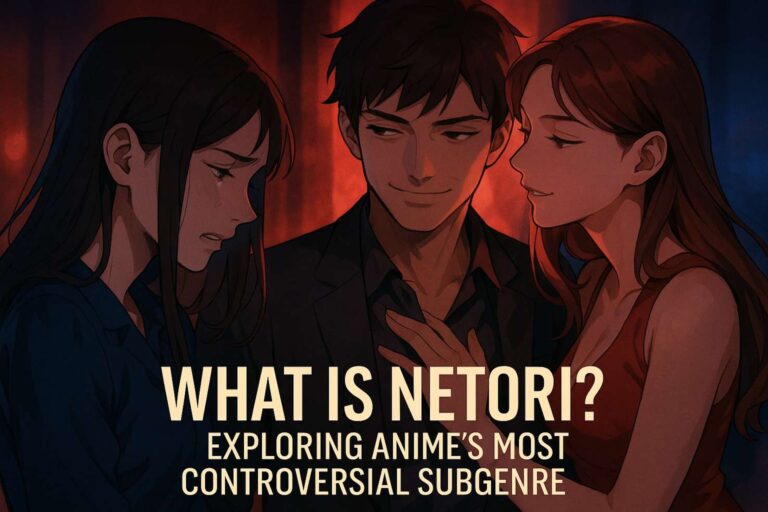Imagine booting up your favorite otome game, only to find yourself trapped inside it—not as the charming heroine, but as the villainess everyone despises. That’s the electrifying premise of Where Death Is the Only Ending for the Villainess, a Korean webtoon that flips the damsel-in-distress trope on its head.
Adapted from a web novel by Gwon Gyeoeul and brought to life with stunning visuals by artist Suol. This series has captivated readers worldwide with its unique blend of tension, strategy, and emotional depth.

Credit: X
The Plot: Surviving in Hard Mode
The story begins with a modern-day university student who’s an avid gamer. After a long night of playing Daughter of the Duke – Love Project, an otome game she knows inside out. She wakes up in a world that feels all too familiar—but with a deadly twist. She’s no longer a player behind a screen; she’s Penelope Eckart, the game’s notorious villainess.
In this game, Penelope’s role is clear: she’s the antagonist destined to die in every route, whether by the sword, poison, or betrayal. Worse yet, the game is set to “Hard Mode,” a setting where every choice seems to lead to her inevitable doom.
Penelope’s new reality is a labyrinth of danger. As the adopted daughter of the powerful Eckart family, she’s surrounded by hostility. Her adoptive brothers, Reynold and Derrick, treat her with disdain, and the game’s love interests—each a potential executioner—present their own set of challenges.
Armed only with her knowledge of the game’s mechanics and storylines, Penelope must navigate a web of treacherous relationships, deadly scenarios, and hidden agendas to rewrite her fate. Every decision she makes could either inch her closer to survival or seal her tragic end.
Meet the Cast: Allies or Executioners?

Credit: Facebook
The characters in Death Is the Only Ending for the Villainess are as complex as they are dangerous, each adding layers of intrigue to Penelope’s journey.
Penelope Eckart
Once a mere NPC designed to be the villainess, Penelope becomes the story’s beating heart. Her transformation from a misunderstood antagonist to a strategic survivor is both compelling and heart-wrenching. She’s not your typical villainess—her sharp wit and determination to survive make her a protagonist readers can’t help but root for. But her journey is far from easy.
Callisto Regulus
The crown prince of the empire, Callisto is as charismatic as he is ruthless. His route is the most perilous, with his volatile personality and penchant for violence making him a wildcard.
Yet, beneath his cold exterior lies a depth that draws Penelope—and readers—into his orbit. His interactions with Penelope are fraught with tension, as she must decide whether to challenge his authority or appeal to his hidden vulnerabilities.
Reynold and Derrick Eckart
Penelope’s adoptive brothers are anything but welcoming. Reynold, the younger brother, is brash and openly hostile, while Derrick, the eldest, is colder and more calculating.
Their disdain for Penelope stems from the original character’s actions, but as the story unfolds, their complex emotions and potential for redemption come to light. Penelope’s relationship with them is a delicate dance of mistrust and gradual understanding, highlighting the nuanced dynamics of family and forgiveness.
Eclise: A former slave who becomes Penelope’s knight, Eclise is a fan-favorite character whose loyalty to Penelope is unwavering. But his tragic past and hidden motives add a layer of mystery to his character.
As Penelope grows closer to him, she must grapple with the question of whether his devotion is genuine or a means to an end.
Each character challenges Penelope in unique ways, forcing her to confront her own biases and moral dilemmas. The relationships are never black-and-white, and the webtoon excels at portraying the gray areas of human connection.
Themes That Resonate

Credit: Amazon
Death Is the Only Ending for the Villainess isn’t just a thrilling survival story. It’s a deep dive into themes that resonate on a personal and societal level.
- Fate vs. Free Will: At its core, the story is a battle between destiny and agency. Penelope’s struggle against her predetermined end mirrors our own battles against societal expectations and the roles we’re often forced to play. Her determination to defy the game’s script is a powerful metaphor for taking control of one’s life, even when the odds are stacked against you.
- Identity and Redemption: Penelope’s journey is as much about survival as it is about self-discovery. As she navigates the game world, she’s forced to confront the original Penelope’s actions and the pain she caused others. The story delves deep into what it means to change one’s destiny and seek forgiveness, both from others and oneself. Penelope’s growth from a cold, misunderstood villainess to a compassionate survivor is a testament to the power of redemption.
- Power Dynamics: The intricate relationships in the webtoon showcase the complexities of power, control, and autonomy. Whether it’s the hierarchical structure of the Eckart family, the political machinations of the empire, or the romantic tension between Penelope and the love interests, the story explores how power shapes interactions and decisions. Penelope’s struggle to assert her autonomy in a world that seeks to control her is a recurring theme that adds depth to the narrative.
Why It’s a Must-Read

Credit: X
What sets Death Is the Only Ending for the Villainess apart from other isekai stories is its ability to blend innovative storytelling with emotional depth.
- Innovative Storytelling: The integration of game mechanics into the narrative is seamless and adds a layer of tension that keeps readers on edge. The system’s dialogue options, affection meters, and “bad ending” flags create a sense of urgency, as every choice Penelope makes could lead to her demise. This meta-narrative approach makes the story feel interactive, even for readers who aren’t playing the game themselves.
- Stunning Artwork: Suol’s artwork is nothing short of breathtaking. The detailed character designs, vibrant color palettes, and expressive facial expressions bring the story to life in a way that words alone never could. Whether it’s the opulent ballrooms of the empire or the quiet, tension-filled moments in the Eckart mansion, the visuals are instrumental in conveying the story’s emotional weight. The art doesn’t just complement the narrative—it enhances it, making every panel a feast for the eyes.
- Relatable Protagonist: Penelope is a character readers can’t help but empathize with. Her internal monologues, filled with frustration, fear, and determination, resonate with anyone who’s ever felt out of place or misunderstood. She’s not a perfect heroine—she’s flawed, sarcastic, and often overwhelmed. But her resilience and growth make her a compelling lead. Her journey is a reminder that even in the darkest of circumstances, there’s always a chance to rewrite your story.
Leveling Up Beyond the Game
Death Is the Only Ending for the Villainess isn’t just another isekai tale. It’s a profound exploration of agency, identity, and the lengths one will go to survive.
It challenges readers to consider: If given a second chance, how would you rewrite your story? Through Penelope’s journey, the webtoon offers a powerful message about the importance of self-determination and the courage it takes to defy fate.
The series has garnered a massive following since its debut, with fans eagerly awaiting each new chapter. Its popularity has even led to discussions of potential adaptations, including an anime and a mobile game.
But beyond its entertainment value, Death Is the Only Ending for the Villainess stands out for its ability to tackle complex themes with nuance and heart.
Whether you’re a fan of otome games, isekai stories, or character-driven dramas, this webtoon is a must-read. This will leave you questioning the boundaries of fate and the power of choice.







